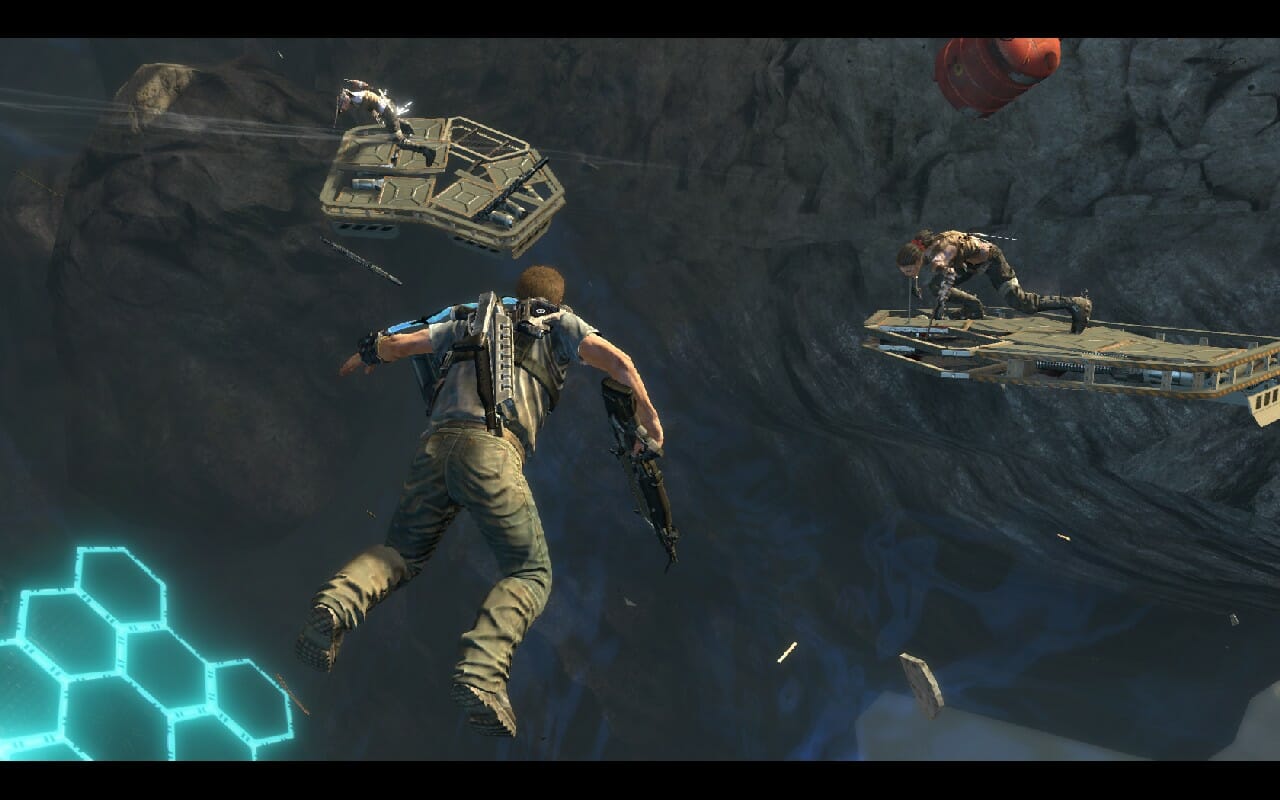Inversion (Multi-Platform)

At first I thought I’d reached the end of a joke.
There, among floating piles of debris, the boxes and crates and torn up asphalt that are the well-established mise-en-scene of the shooter genre, I was completely in the open. I was exposed, without cover, suspended in air. It seemed like the perfect punchline to the game’s first hour of tedious convention: In a genre that emphasizes position and placement, where loose, split second trigonometry of bullet paths is necessary and where mastery of geography is key, I was floating aimlessly with no idea of what was up and where to go. At that moment Inversion had lived up to its title. This was something different. And then gravity hit.
I was back on the ground. Back in the land of stationary crates and boxes to be hidden behind. Back to a linear, third person cover shooter about manly men shooting and stabbing underground techno-barbarians. The man you play as is searching for his daughter which is a quest filled with corpses and unnecessary screaming. At one point he screams at an 8-year-old boy, suggesting that, just maybe, he isn’t quite Dad of the Year material.
The “twist” here is that gravity is sometimes not as reliable as it should be. There is a gravity altering gauntlet your character finds early in the game. It can either make things weightless allowing you to manipulate items, or it can make things heavy, which can form a shield and slow down enemies. The uses for the gauntlet itself are limited: Projectiles can be grabbed and whipped around, and enemies can be made to levitate out of cover. This system rarely allows for any real creativity: What the device can and should be used for is usually telegraphed, usually by your annoying partner who seems to have no faith in you. There are enemies coming down a highway? Why not use of the many cars left as debris to thin them out. Hey, there’s a sniper on top of that rickety wooden tower. It’d be a shame if something were to happen to it (wink, wink).

The few bits of true weightlessness also feel shallow, rarely allowing you to enjoy the possibilities. The game boxes these areas in, so there’s still a clear focus for the action. Instead of a subversion of the genre, Inversion gives it a new environment. There is another moment of barely alluded to potential where the center of gravity is different between areas. The result is fighting enemies that are at a 90 degree angle from your character. Again, this is an idea that can be played, pulled at and expanded on, and deserves its own time to breath. Instead it’s discarded as quickly as it appears, as if it’s enough to bring up a great idea without having to show the work.